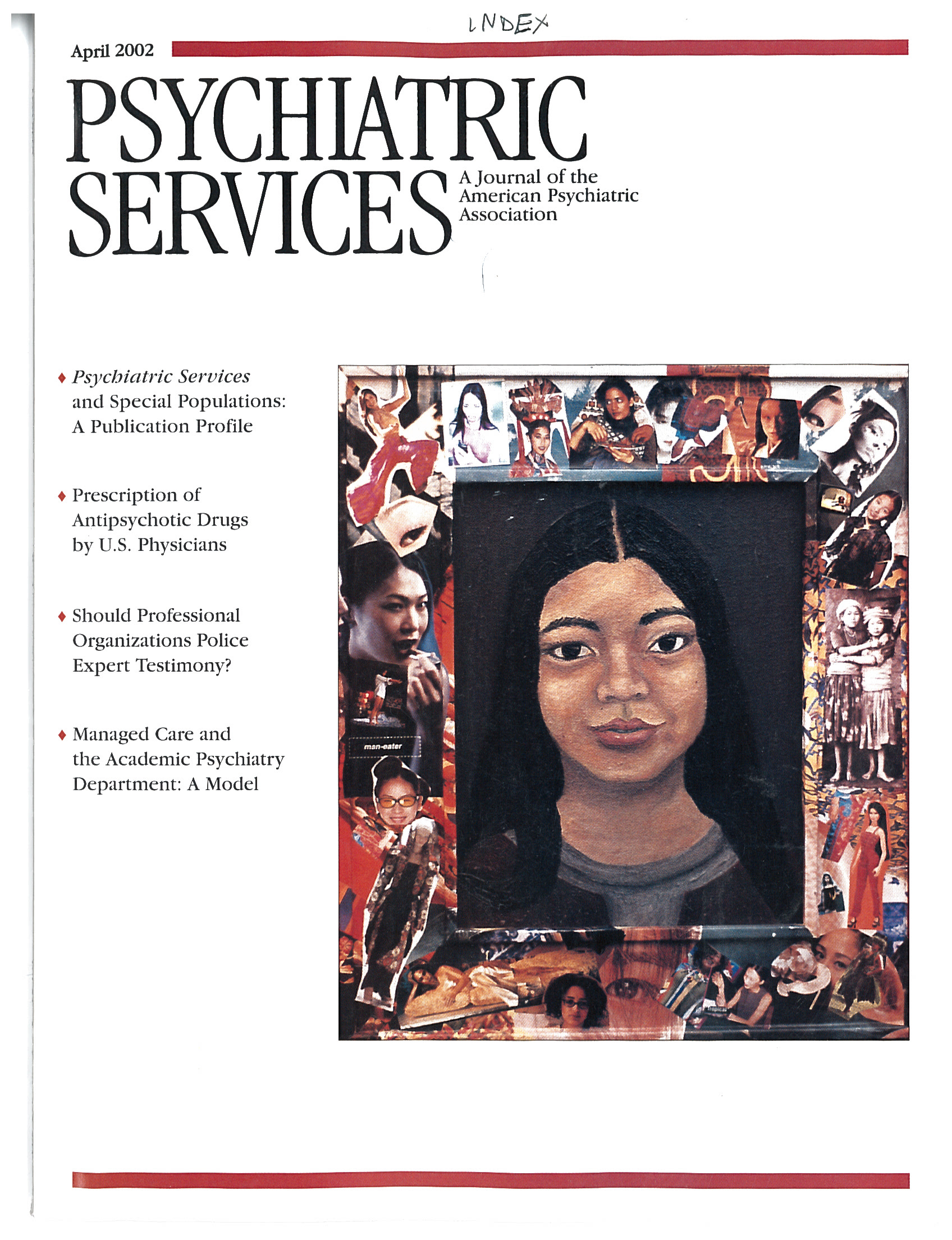Risk for Individuals With Schizophrenia Who Are Living in the Community
To the Editor: Patients with schizophrenia living in the community are frequently victims of violent crimes, and data on this important issue are scarce. The article by Brekke and his colleagues in the October 2001 issue (1) provided valuable information. However, there are serious limitations to the generalizability of these data.
First, the levels of violent behavior found among the patients might have been spuriously low because of the selective attrition of violent patients. As the authors state, "during the first six months of the study, any participant who dropped out was replaced and was excluded from the analyses." In addition, only 72 percent of the patients retained after the first six months completed the 36-month study. We are told that the patients who dropped out (28 percent) did not differ at baseline from those who completed the study. However, it is possible that those who dropped out failed to show up for their follow-up interviews because they had been incarcerated or rehospitalized. Violent behavior frequently precipitates either of these events (2). Because the patient interview was apparently the only source of follow-up data, the authors were unable to ascertain causes of attrition.
Second, the authors chose to study only patients who were at low risk of violence. As they stated, "all participants were housed and did not have co-occurring substance use disorders." The authors acknowledged that such criteria limit the generalizability of their findings. Nevertheless, readers should be reminded that these criteria resulted in a sample that is thoroughly unrepresentative of patients with schizophrenia who are living in the community. Among patients with chronic schizophrenia, research has shown that the six-month prevalence rate of comorbid substance abuse is around 30 percent (3,4).
In addition to these problems, the authors' review of the literature appears inaccurate. They state that a Danish study "showed that individuals who were hospitalized for schizophrenia had higher rates of arrest for violent crime than those who had never been hospitalized…. However, the results of two earlier European studies do not support this finding." The two studies they referred to are those of Modestin and Ammann and Tiihonen and associates. The authors' evaluation of the studies is surprising. Modestin and Ammann reported that patients with schizophrenia were five times more likely than people in the general population to have been convicted of violent crimes. Tiihonen and associates found that patients with schizophrenia were seven times as likely as people in the general population to have at least one registered violent crime. This estimate was based on a group that included patients with schizophrenia and comorbid substance use disorders. Nevertheless, a small subset of the violent offenders with schizophrenia did not have comorbid substance abuse, which permitted the authors to tentatively conclude that the risk of violent offenses is elevated even among patients who have schizophrenia without comorbid substance abuse problems. Their conclusion is consistent with the results of a prospective birth cohort study that is in progress in New Zealand (5).
Dr. Volavka is chief of clinical research at the Nathan Kline Institute in Orangeburg, New York, and professor of psychiatry at New York University in New York City.
1. Brekke JS, Prindle C, Bae SW, et al: Risks for individuals with schizophrenia who are living in the community. Psychiatric Services 52:1358-1366, 2001Link, Google Scholar
2. Volavka J: Neurobiology of Violence. Washington, DC, American Psychiatric Press, 1995Google Scholar
3. Drake RE, Wallach MA: Substance abuse among the chronic mentally ill. Hospital and Community Psychiatry 40:1041-1046, 1989Abstract, Google Scholar
4. Steadman HJ, Mulvey EP, Monahan J, et al: Violence by people discharged from acute psychiatric inpatient facilities and by others in the same neighborhoods. Archives of General Psychiatry 55:393-401, 1998Crossref, Medline, Google Scholar
5. Arseneault L, Moffitt TE, Caspi A, et al: Mental disorders and violence in a total birth cohort: results from the Dunedin study. Archives of General Psychiatry 57:979-986, 2000Crossref, Medline, Google Scholar



